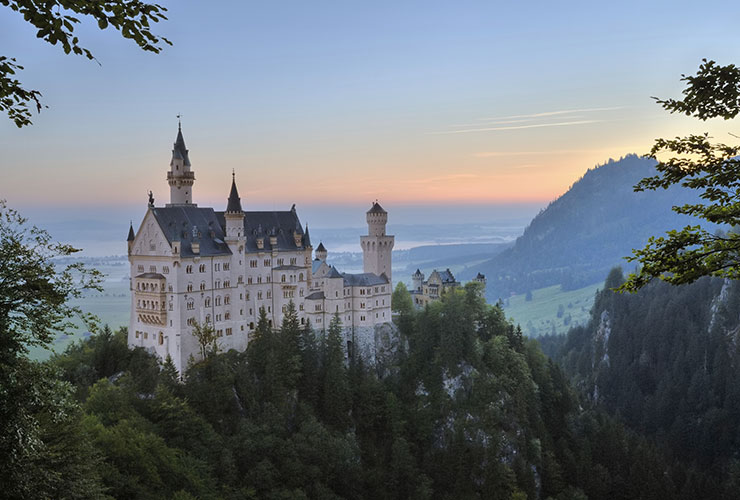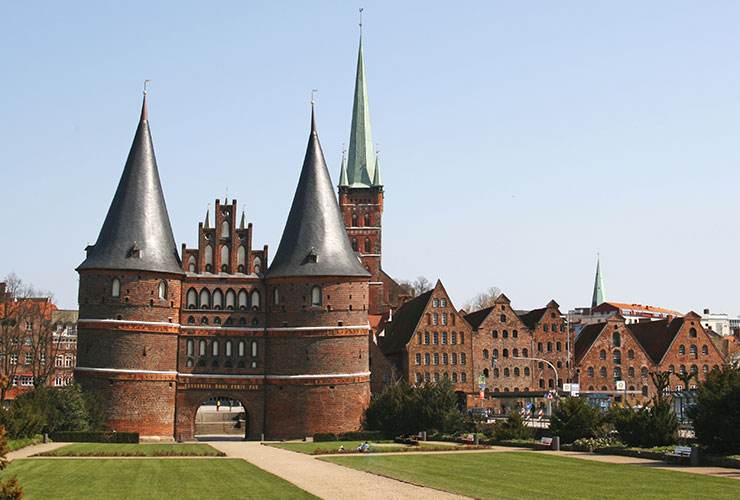Travel to Berlin and through the former East Germany
The former East Germany is a land of great personality and its history is rich with passion and art. In the heart of this area lies Berlin, the attractive capital of Germany that has become one of the most fruitful cultural melting pot in the world and a benchmark for fashion, art, design and music despite its troubled past.
When you travel to Berlin, past is always present: The Reichstag (German Parliament) and the Brandenburg Gate are both symbols of German unity and yet close to the once dividing Berlin Wall. You can take a walk along part of what remains of the most famous wall in the world, just from the Brandenburg Gate to the sumptuous Potsdamer Platz. You can enter the Museum of the Berlin Wall at Checkpoint Charlie, where people crossed the border between the two Germanys, and learn about the history of the separated city of Berlin. For sure you cannot miss Alexanderplatz, an iconic square of Berlin.
The cultural and green aspect of Berlin
Opera houses, theaters and auditoriums for concerts enliven the cultural life of Berlin, which has even become a hub for the contemporary European art scene. The Museum Island, a very unique museum center in the world, and the over 100 museums the city offers are sure to satisfy the interest of those who want to dive into an amazing artistic journey. Berlin is a city full of life and sometimes looks like a huge construction site that hosts many urban and architectural innovations. But the capital remains a city on a human scale where greenery predominates. You can feel the electrifying energy of the city as you walk down the boulevards, wander through art and flea markets, or enjoy the many restaurants and Kneipen which are open until late.
The World Heritage towns of Potsdam and Weimar
From the center of Berlin, you can easily reach Potsdam and the Rococo palace of Sanssouci, the former summer residence of the Prussian kings, with its lush gardens and its terraced vineyards. Then make your way south and visit the wonderful city of Weimar, an important reference center for German culture. Here the Bauhaus was born, the school of architecture, art and design conceived by Walter Gropius that so deeply changed modern architectural and aesthetic standards in the early 20th century. In this small Thuringia town lived Goethe, Schiller, Bach and Liszt. The houses and places where they worked belong to the monuments of the city declared UNESCO heritage sites and stand as reminders of the “Weimar Classicism” period, a literary and cultural movement that arose and grew in Weimar between 1772 and 1805.
Dresden, the “Florence of the Elbe”
Last but not least, Dresden. It is a magical place, a city full of history and locations to discover and admire. It has often been called the “Florence of the Elbe” because of its wonderful Renaissance architecture. Dresden was a true cradle of culture in the heart of Saxony, a place also rich in Baroque monuments, surrounded by countryside fairytale castles, vineyards and parks. The Altmarkt, the oldest square, dates back to the 1300s. It was once the site of the market and city festivals, and the steeple of the Frauenkirche still presides over it. The reconstruction of this church is an impressive symbol of international reconciliation after World War II. Nowadays the Neumarkt forms the downtown core. You will recognize it by the Luther Monument that stands in its center, but especially by the buildings that surround it: The Hofkirche, the Zwinger and the Albertinum, all architectural masterpieces of Dresden.
The tradition of porcelain in Meissen
A few kilometers outside Dresden you can enjoy a final interesting trip. Many poets and painters have been inspired by the quaint town of Meissen. The steep vineyards of the smallest wine center located along the Saxony wine route offer a fine wine. The gentle banks of the Elbe are perfect for riding along the Elbe cycle route and relaxing while hiking on a paddle steamer cruise. But most of all Meissen is famous because of its “white gold”: for more than 1000 years the Meißner Porzellan is the noble porcelain which bears the name of this city all over the world.
 Hire Expertise
Hire Expertise Bespoke Itineraries
Bespoke Itineraries Travel Carefree
Travel Carefree We suggest you at least
We suggest you at least 
